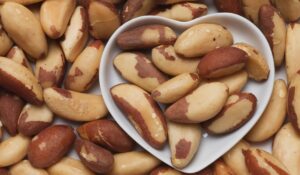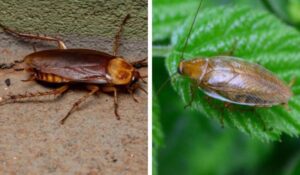Introduction
Begonia Mallacoota is a fascinating and vibrant plant known for its lush foliage and colorful flowers. Whether you’re a beginner gardener or an experienced horticulturist, this plant is easy to care for and adds a touch of elegance to any garden or indoor space. In this article, we’ll dive deep into everything you need to know about Begonia Mallacoota, from its origin to care tips, and common problems. You’ll also find useful FAQs to ensure your plant thrives.
What is Begonia Mallacoota?
Begonia Mallacoota is a unique and rare variety of the begonia plant family, native to tropical and subtropical regions. Known for its striking appearance, this species boasts beautiful leaves, typically in shades of green, purple, or silver. It produces small, colorful flowers that contrast well with its deep-toned leaves.
This plant is a favorite among collectors and hobbyists due to its distinctive look and easy-to-care nature. Begonia Mallacoot is a perfect addition to indoor plant collections or shaded outdoor gardens. With proper care, it can flourish in different climates and grow both in pots and garden beds.
How to Plant Begonia Mallacoota?
Planting Begonia Mallacoot is quite simple, even for beginners. You can start by selecting a pot with proper drainage, filled with well-draining soil. The plant prefers a mix of peat, perlite, and compost to maintain moisture while allowing excess water to escape.
When planting outdoors, choose a location that offers partial shade as this plant thrives in low light. Begonia Mallacoota does not tolerate direct sunlight well, which can scorch its leaves. Ensure the soil is kept consistently moist but avoid overwatering, as this may cause root rot.
Watering and Fertilization Tips for Begonia Mallacoota
Watering is crucial for the healthy growth of Begonia Mallacoot. This plant prefers to stay moist but not soaked. The best practice is to water the plant when the top inch of the soil feels dry. Avoid letting the plant sit in water, as this can lead to fungal diseases.
For fertilization, use a balanced, water-soluble fertilizer once a month during the growing season (spring and summer). Reduce feeding during the colder months, as the plant’s growth slows down. Make sure not to over-fertilize, as too many nutrients can cause leaf burn.
Ideal Lighting Conditions for Begonia Mallacoota

Begonia Mallacoot thrives in low to moderate indirect light. While this plant enjoys some sunlight, direct exposure can damage its leaves, leading to discoloration and wilting. If growing indoors, place it near a north-facing window or use sheer curtains to diffuse the sunlight.
If you’re growing the plant outdoors, consider planting it in a shaded spot where it gets dappled sunlight. Keeping Begonia Mallacoota away from harsh sunlight is essential to maintaining its vibrant color and healthy foliage.
Common Pests and Diseases of Begonia Mallacoota
Though Begonia Mallacoot is relatively easy to care for, it is still susceptible to pests and diseases. Common pests include aphids, spider mites, and whiteflies. These insects can damage the leaves, causing discoloration and stunted growth. You can treat these pests with insecticidal soap or neem oil.
In terms of diseases, powdery mildew and root rot are the most common issues. Powdery mildew appears as white, powder-like spots on the leaves, while root rot occurs when the plant is overwatered. Regularly inspecting the plant and ensuring proper watering practices can prevent these problems.
Propagating Begonia Mallacoota
Propagating Begonia Mallacoot can be done through stem or leaf cuttings. To propagate via stem cutting, select a healthy stem and cut just below a node. Place the stem in a glass of water or directly in the soil. For leaf cuttings, remove a healthy leaf, cut it into sections, and place them in moist soil.
Both methods are effective, but it’s important to maintain high humidity and keep the soil consistently moist until the new roots develop. Propagation is best done during the spring or early summer when the plant is actively growing.
Seasonal Care for Begonia Mallacoota
Begonia Mallacoota’s care varies slightly with the seasons. In spring and summer, the plant requires regular watering, fertilizing, and proper sunlight. During fall and winter, when the plant enters dormancy, reduce watering and stop fertilization. The plant may drop some leaves, which is completely normal.
It’s also a good idea to protect the plant from cold drafts during winter if grown indoors. Maintaining a temperature between 60°F and 75°F is ideal for Begonia Mallacoot to thrive year-round.
Benefits of Growing Begonia Mallacoota
Aside from its aesthetic appeal, Begonia Mallacoot provides several benefits. It acts as a natural air purifier, removing toxins from the indoor environment. Additionally, its bright foliage and flowers can uplift the mood and enhance the look of any space.
This plant is also low-maintenance, making it a great choice for people who are new to gardening or have limited time. Its compact size makes it perfect for small apartments or homes with limited gardening space.
Conclusion
Begonia Mallacoota is an excellent choice for any plant lover due to its striking appearance and easy care requirements. By following the guidelines in this article, you can enjoy a beautiful, thriving plant that enhances both indoor and outdoor spaces. Whether you’re planting, watering, or propagating, with the right care, Begonia Mallacoot will reward you with vibrant colors and lush foliage year-round.
FAQs
What is the best soil for Begonia Mallacoota?
Begonia Mallacoota thrives in well-draining soil, such as a mix of peat, perlite, and compost.
How often should I water Begonia Mallacoota?
Water when the top inch of soil is dry. Avoid overwatering to prevent root rot.
Can Begonia Mallacoota tolerate direct sunlight?
No, it prefers low to moderate indirect sunlight. Direct exposure can damage its leaves.
What pests affect Begonia Mallacoota?
Common pests include aphids, spider mites, and whiteflies.
How do I propagate Begonia Mallacoota?
Propagation can be done using stem or leaf cuttings.
Does Begonia Mallacoota need fertilization?
Yes, use a balanced fertilizer once a month during the growing season.
What are common diseases of Begonia Mallacoota?
Powdery mildew and root rot are common issues.
How do I care for Begonia Mallacoot in winter?
Reduce watering and stop fertilizing during the plant’s dormant phase










































